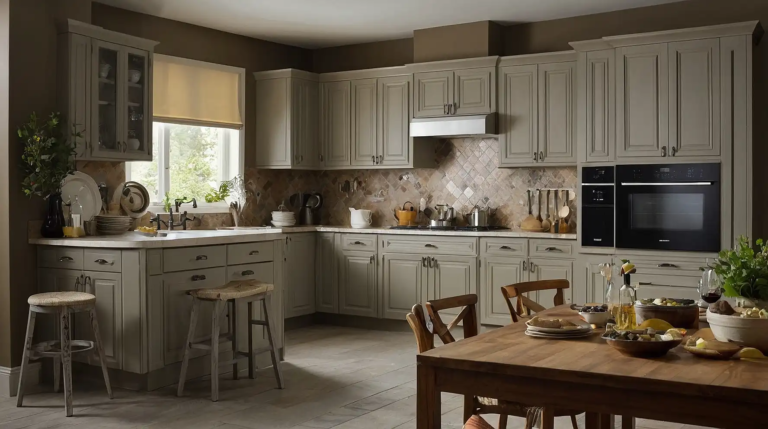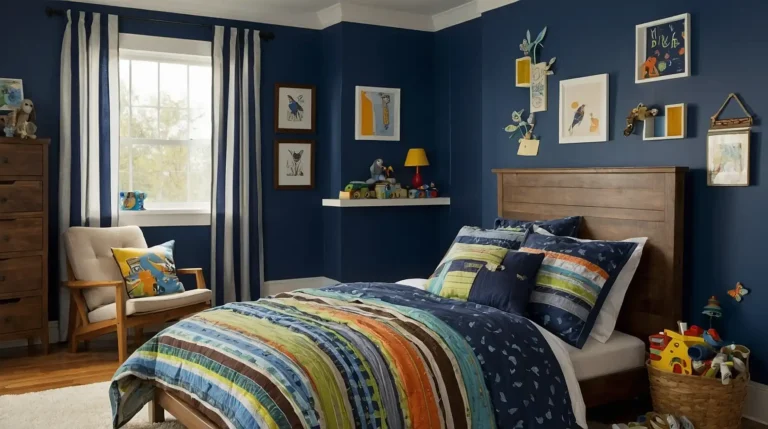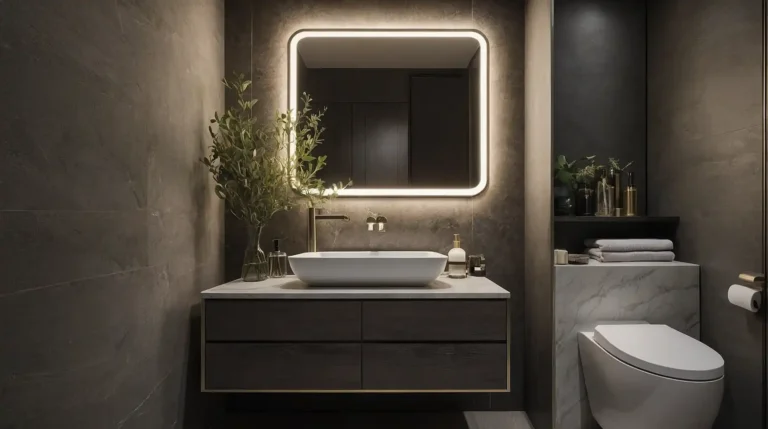27 Stunning Sage Green Kitchen Ideas to Transform Your Space
Sage green has emerged as one of the most sought-after colors in kitchen design, offering a perfect balance of sophistication and tranquility.
This versatile hue brings nature indoors while creating a space that feels both timeless and completely current.
Unlike bold colors that may quickly feel dated, sage green provides subtle color that complements nearly any design style—from farmhouse to contemporary.
Its earthy undertones create a calming atmosphere in what’s often the busiest room in your home.
Ready to embrace this beautiful color?
Explore these 27 sage green kitchen ideas that will elevate your space from ordinary to extraordinary without overwhelming your senses.
1: Sage Green Cabinetry

Transform your kitchen with full sage green cabinetry for a bold yet soothing statement.
This commitment to color creates a cohesive look that feels both distinctive and timeless.
Pair with brass or matte black hardware for contrast that pops against the muted backdrop.
The green tone creates a neutral-adjacent foundation that works with various countertop materials.
Choose a matte or satin finish to enhance the organic, earthy quality of the sage green.
2: Two-Tone Cabinet Strategy

Combine sage green lower cabinets with white or cream uppers to create visual balance and prevent the color from overwhelming your space.
This approach keeps the kitchen feeling bright and open. The darker base cabinets ground the space while hiding everyday smudges and scuffs.
Reserve the lighter color for eye-level cabinets to maximize the light-reflecting qualities.
This strategic color blocking creates architectural interest in even the most basic kitchen layouts.
3: Sage Green Island Focus
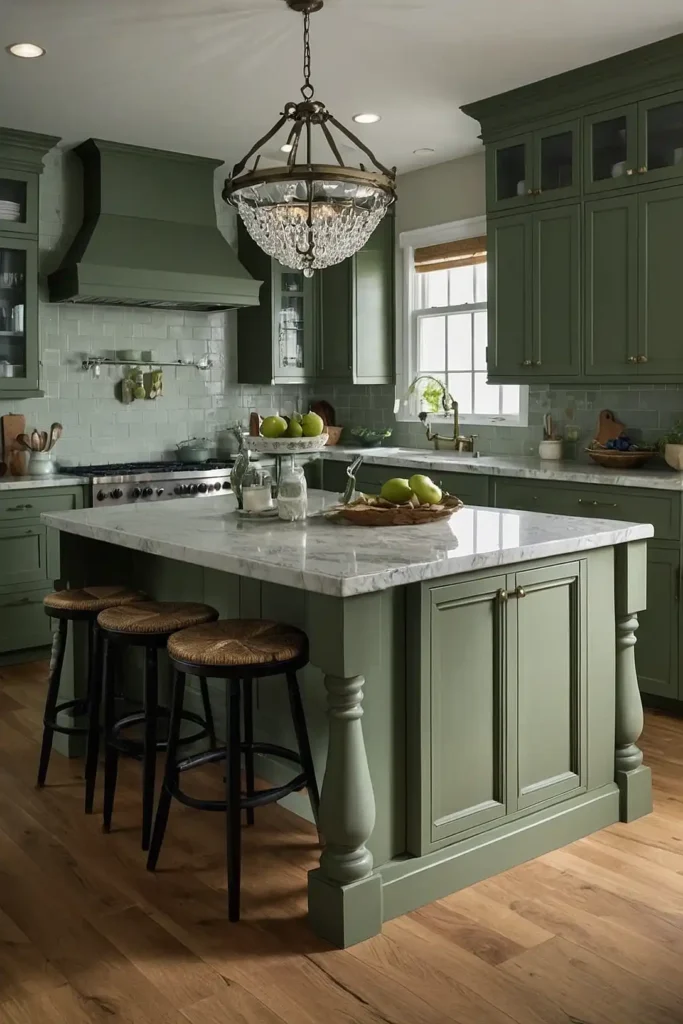
Make your kitchen island the focal point by painting it sage green while keeping perimeter cabinets neutral. This targeted approach adds color without full commitment to a green kitchen.
The island becomes a furniture-like centerpiece in your kitchen. Choose a slightly darker sage tone for the island to create subtle hierarchy within the space.
This approach works especially well in open floor plans where the kitchen flows into other areas.
4: Sage Green Subway Tile Backsplash
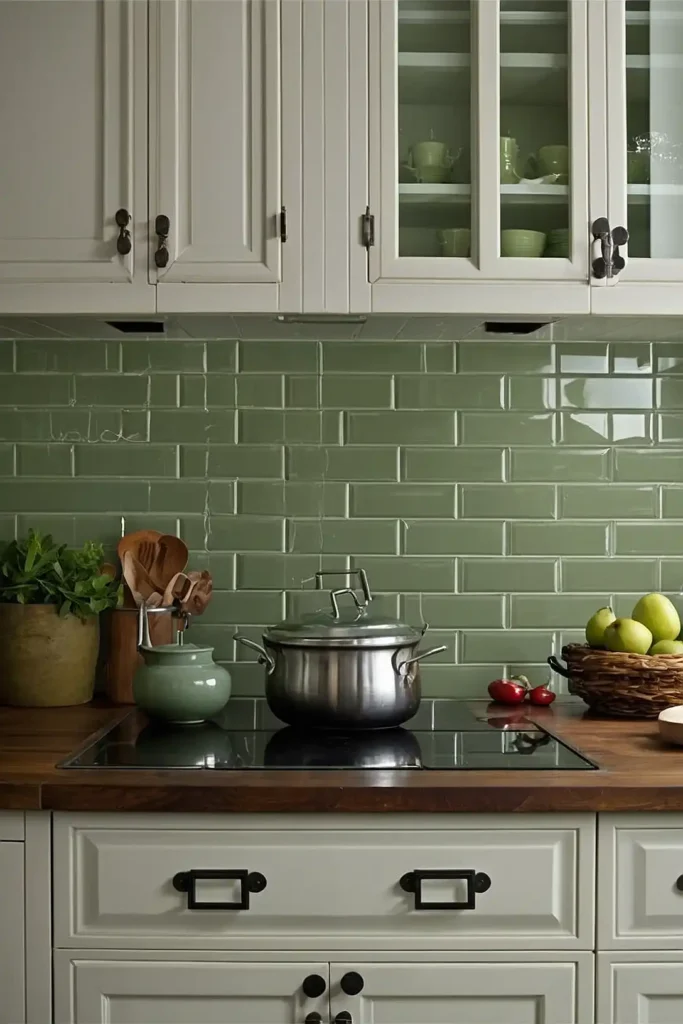
Install sage green subway tiles for a backsplash that offers subtle color with timeless appeal.
The classic rectangular shape keeps the look familiar while the color adds fresh personality.
Consider various laying patterns like herringbone or vertical stacks for added interest.
Pair with contrasting grout in white or light gray to emphasize the tile pattern.
This wipeable surface adds color while standing up to cooking splatters and daily cleaning.
5: Sage and Marble Combination
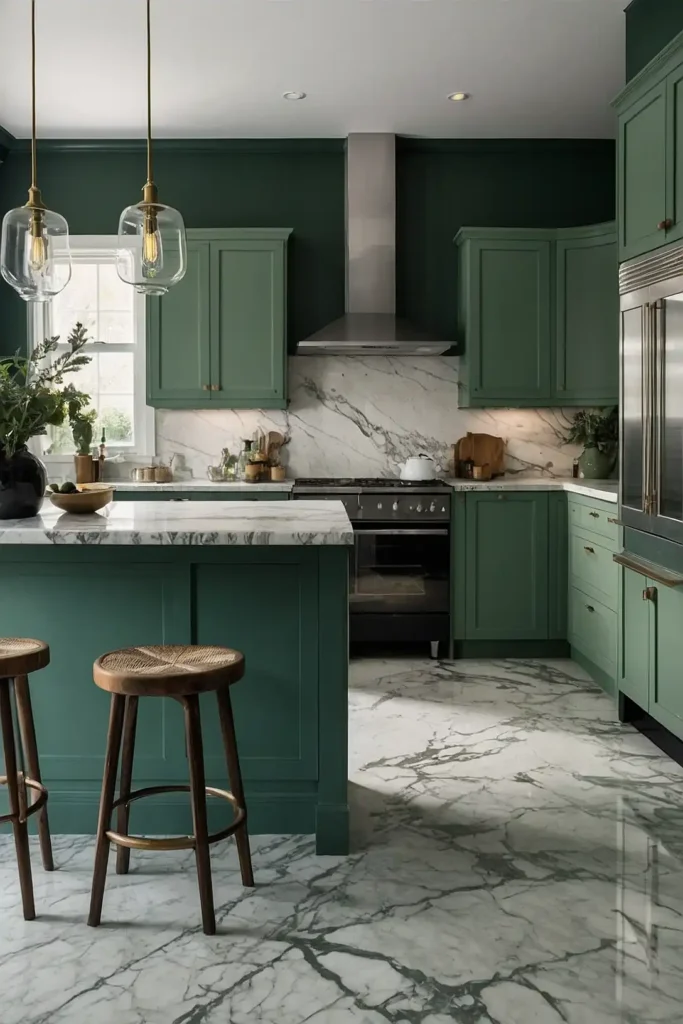
Pair sage green cabinetry with white marble countertops for a luxurious contrast that balances cool and warm elements.
The organic veining in marble complements the natural quality of sage.
The marble’s light surface brightens the space while sage cabinets add depth. Keep other elements simple to let this classic combination take center stage.
This timeless pairing works in kitchens of any size, creating sophisticated impact.
6: Sage Green Range Hood

Cover your range hood in sage green to create an unexpected focal point against neutral cabinets.
This strategic color placement draws the eye while keeping the overall palette restrained.
Choose a hood style that complements your kitchen’s aesthetic—from sleek and modern to ornately detailed. The vertical color element creates height and interest in the cooking zone.
This approach works particularly well with white or wood-tone cabinets for balance.
7: Painted Sage Ceiling
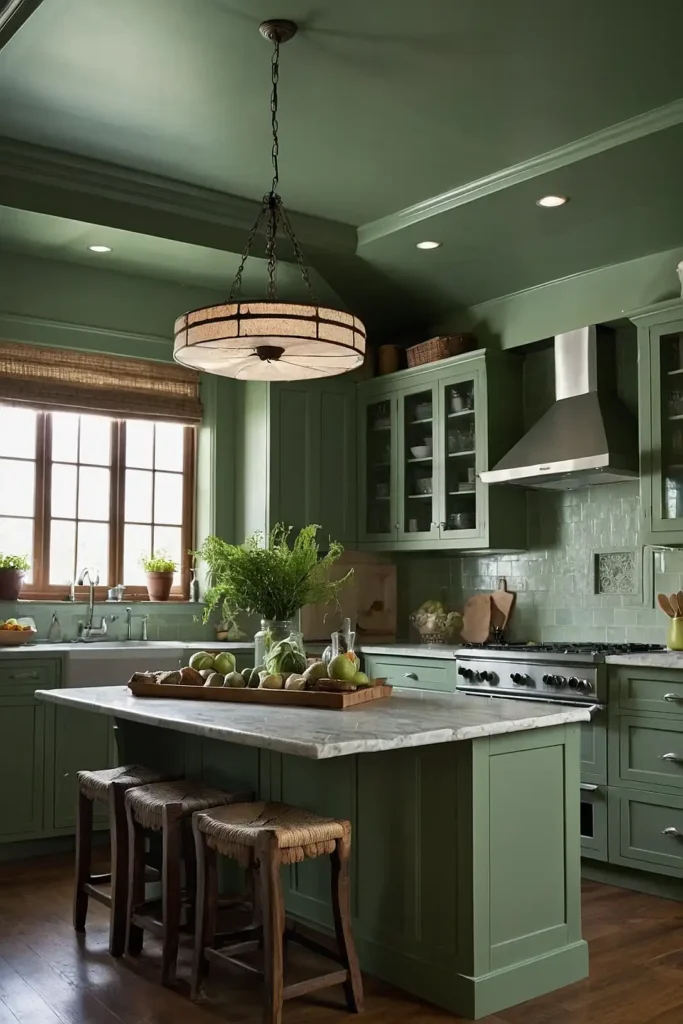
Apply sage green paint to your kitchen ceiling for an unexpected color moment that doesn’t consume visual real estate.
This surprising element adds character while keeping walls and cabinets neutral.
The subtle ceiling color reflects a soft glow throughout the space. Extend the paint to crown molding for a deliberate, designed approach.
This conversation-starting feature creates interest without sacrificing light or space.
8: Sage Green Window Frames
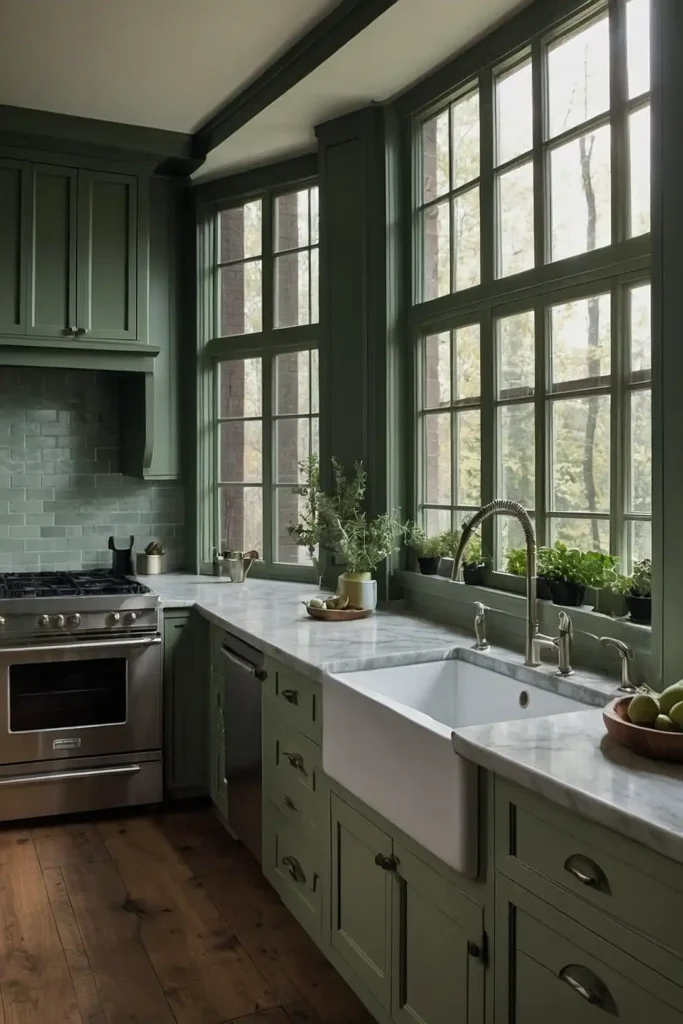
Highlight architectural details by painting window frames and trim in sage green. This precise application adds thoughtful color that frames your outdoor views.
The defined green outlines create a garden-inspired focal point. Pair with neutral walls and cabinets to let the windows become a standout feature.
This approach works beautifully in kitchens with garden or backyard views, creating visual connection between indoors and out.
9: Open Shelving with Sage Backdrop
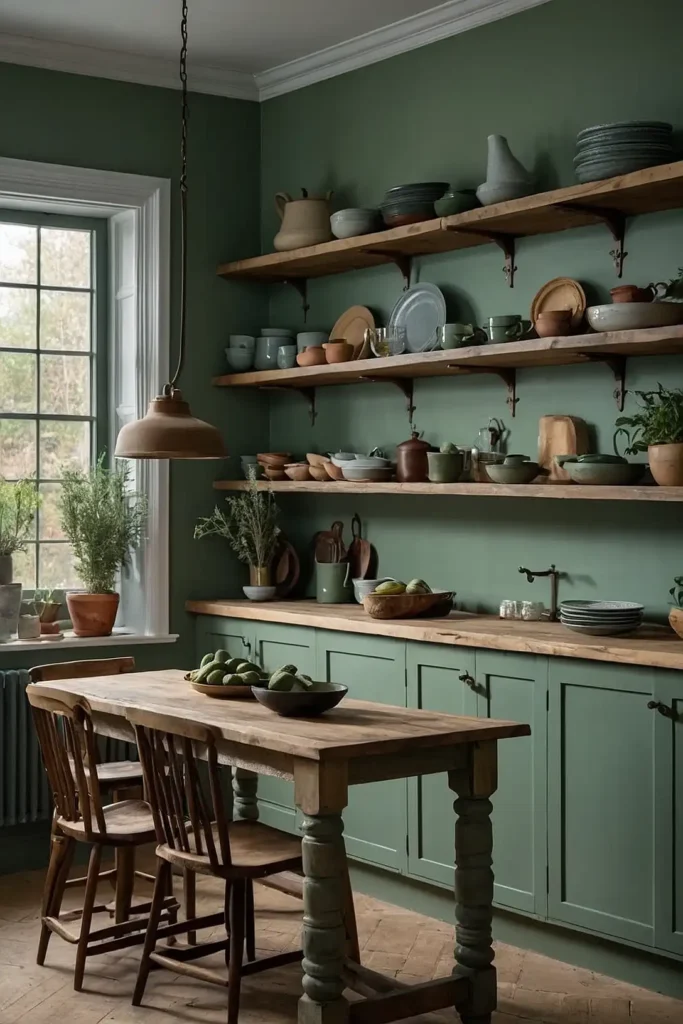
Install open shelving against a sage green wall to create display space with colorful impact.
The green backdrop makes white dishes and glassware pop while colored items create intentional contrast.
Keep shelving material simple in natural wood or white to maintain focus on the wall color.
Style shelves thoughtfully with a mix of functional and decorative items for a curated look.
This approach combines storage solution with color statement in one design move.
10: Sage Green Pendant Lights

Hang sage green pendant lights above your island or sink for unexpected color that doesn’t require permanent commitment.
These eye-level color moments create interest within your sightline.
Choose ceramic, metal, or glass fixtures that incorporate the sage tone.
Cluster multiple pendants for greater impact or choose one oversized fixture as a statement piece.
This easily changeable design element adds personality without renovation commitment.
11: Vintage Sage Appliances
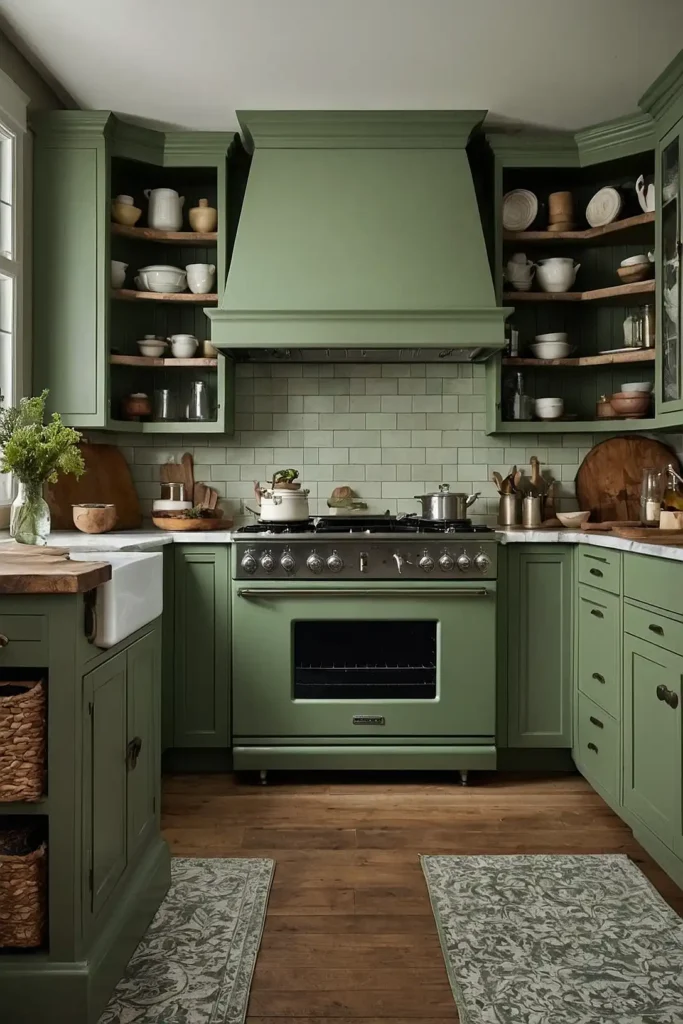
Incorporate sage green appliances for a retro-inspired look with modern functionality.
Many appliance brands now offer colored options that serve as kitchen focal points.
Position these statement pieces centrally in your layout to maximize their impact.
Balance with neutral cabinets and simple backsplashes to prevent overwhelming the space.
This approach works particularly well in mid-century or vintage-inspired kitchen designs.
12: Sage Green Kitchen Textiles
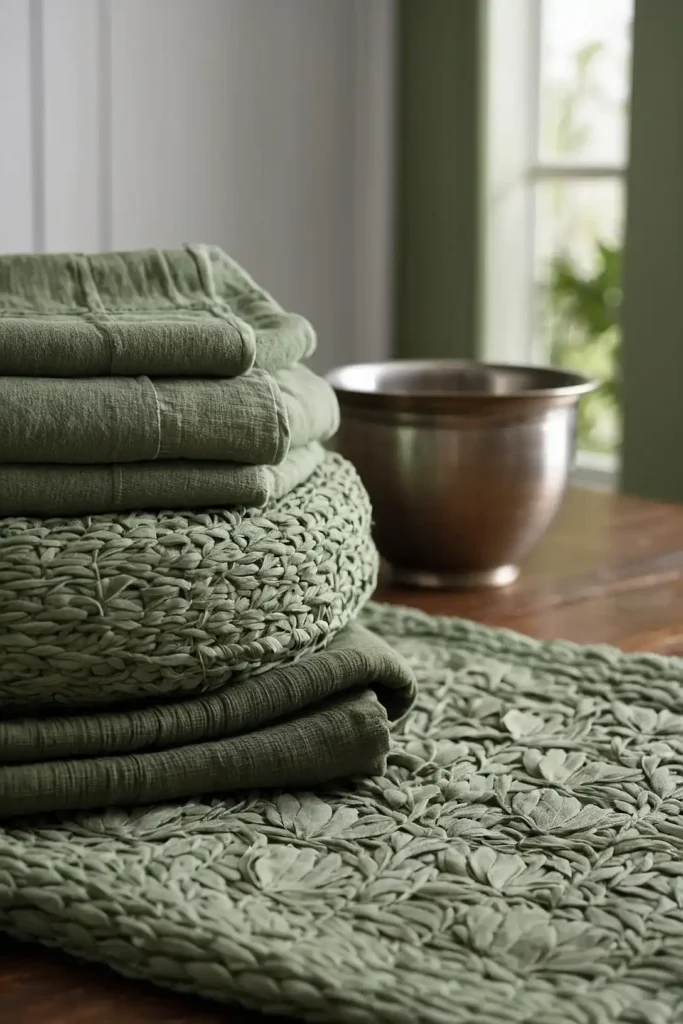
Introduce sage through dish towels, oven mitts, seat cushions, and window treatments for color without commitment.
These interchangeable elements allow you to test the color before larger investments.
Layer multiple sage tones and textures for dimensional interest. Combine with complementary colors like terracotta or mustard for seasonal updates.
This budget-friendly approach allows for easy updates as your taste evolves.
13: Sage and Wood-Tone Harmony

Pair sage cabinetry with warm wood elements for a nature-inspired palette that feels organic and balanced.
The complementary tones create a peaceful, grounded aesthetic.
Incorporate wood through open shelving, countertop sections, or floor planks.
The combination references outdoor landscapes where plants and trees naturally coexist.
This harmonious pairing works across design styles from Scandinavian to rustic farmhouse.
14: Sage Green Pantry Door
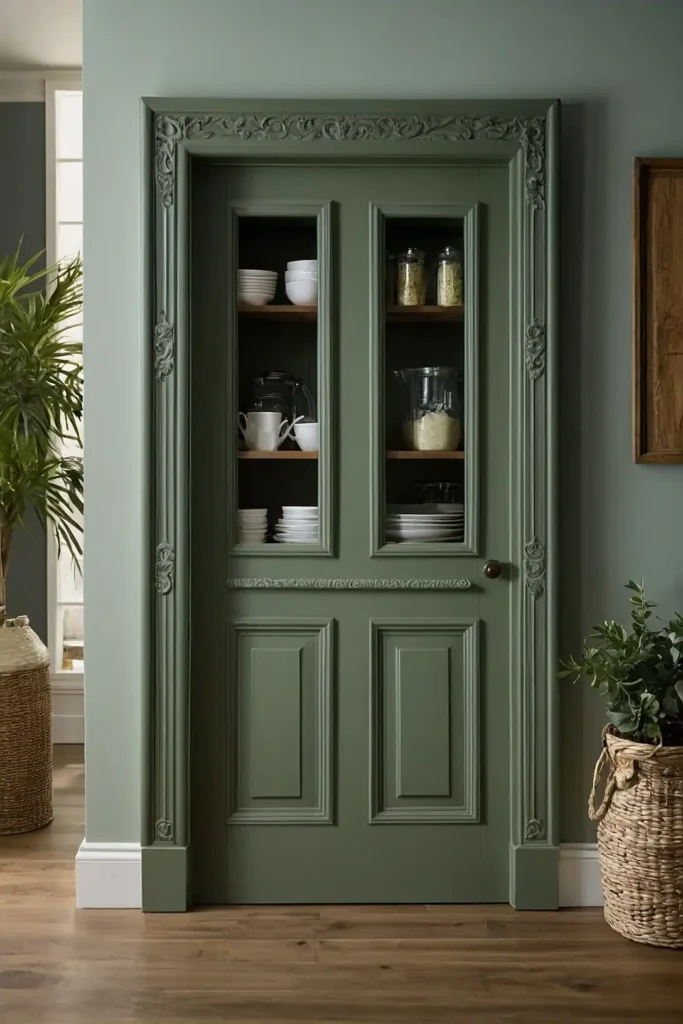
Paint your pantry door in sage green to create a distinctive feature that adds personality without overwhelming the space.
This targeted color application serves as practical wayfinding within your kitchen.
Choose a door style with panels or details that will showcase the paint color.
Consider adding special hardware that elevates the door’s importance in your design.
This simple weekend project delivers significant design impact with minimal investment.
15: Sage-Toned Countertops

Install countertops with sage green tones through concrete, quartz, or natural stone for a subtle color infusion.
These surfaces provide color stability without overwhelming vertical sight lines.
The horizontal color plane anchors the space while showing less visually than cabinetry.
Choose materials with varied textures and subtle pattern for added interest.
This approach works particularly well with neutral cabinets in white, cream, or natural wood.
16: Sage Green Floor Tiles
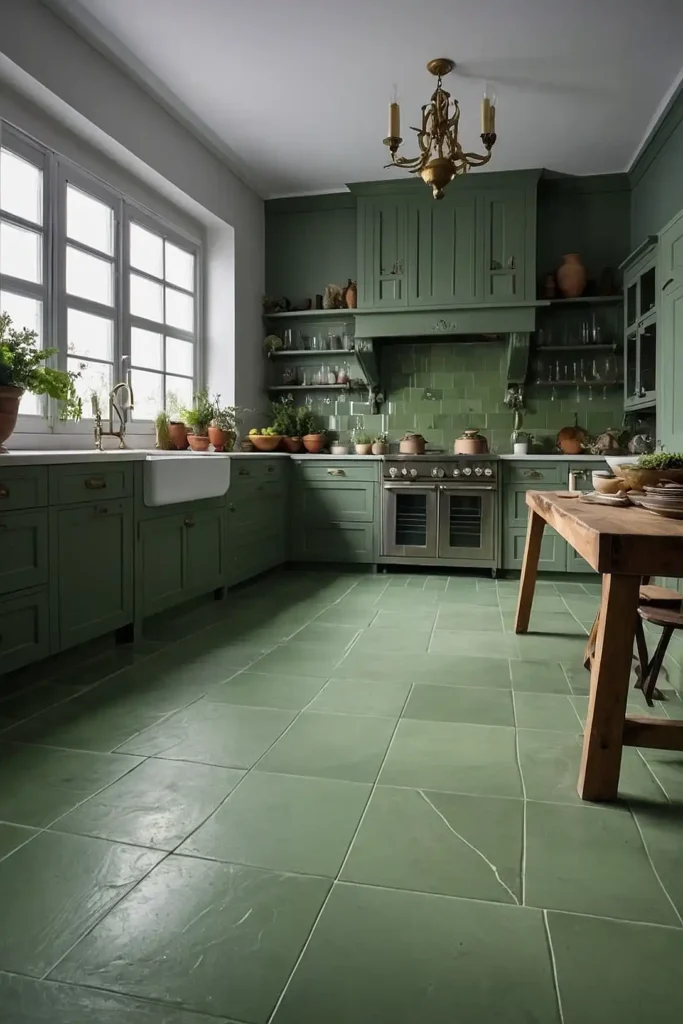
Install sage green floor tiles in porcelain, ceramic, or encaustic cement for a color foundation that grounds your kitchen design.
The unexpected floor color creates a distinctive base for neutral elements above.
Choose small mosaic patterns or large-format tiles depending on your space size. Consider subtle variations in the green tone for depth and dimension.
This durable surface hides daily dirt while adding continuous color throughout the space.
17: Sage and Brass Accents

Complement sage green with warm brass hardware, fixtures, and accessories for a sophisticated color combination.
The metallic warmth balances the cool undertones in most sage green shades.
Use brass consistently throughout the space for cohesion—from cabinet pulls to faucets.
The reflective quality adds brightness and dimension against the matte sage backdrop.
This pairing creates timeless elegance that bridges traditional and contemporary aesthetics.
18: Sage Green Kitchen Furniture
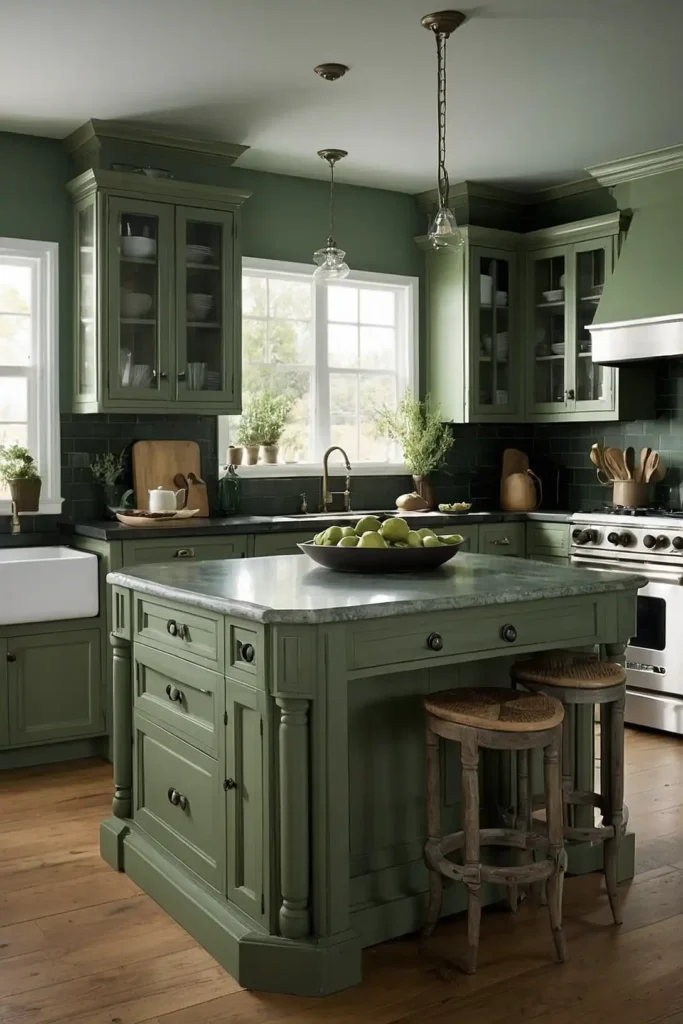
Incorporate a sage green island, table, or banquette seating as a furniture-like element within a neutral kitchen.
This approach adds color through distinct pieces rather than built-in elements.
Choose pieces with interesting details that deserve highlighting in color.
This targeted approach allows flexibility to change your mind about the color in future updates.
The furniture-based color strategy works well in rental properties where permanent changes aren’t possible.
19: Sage Green Plate Display
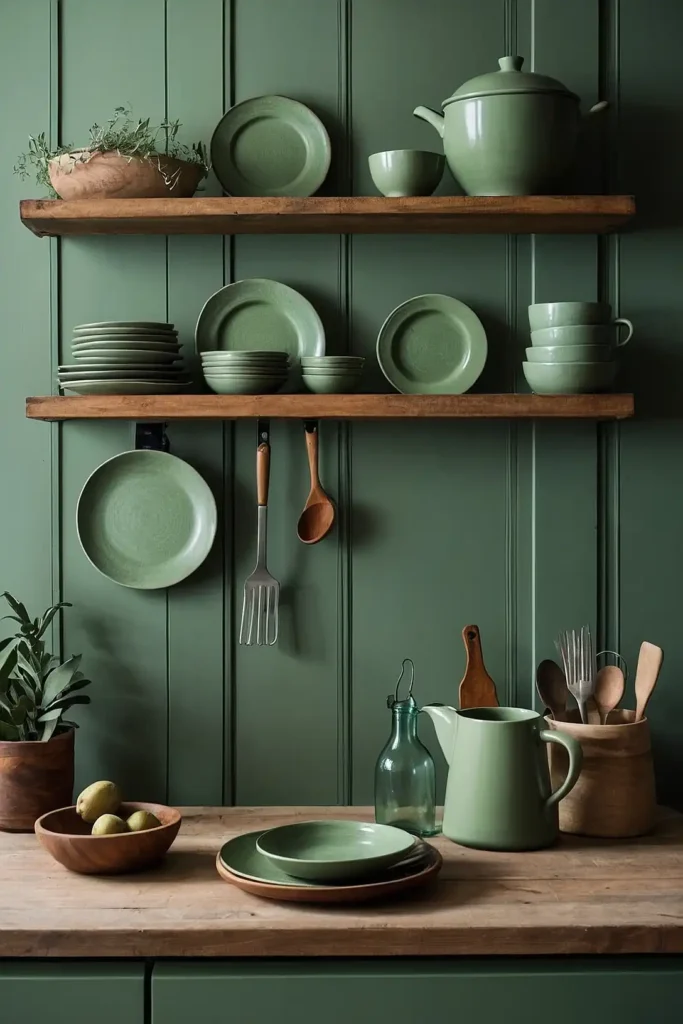
Create a decorative wall display using sage green plates, platters, and serving pieces.
This collection adds color at eye level while celebrating your culinary personality.
Mix various green tones and patterns for collected character. Install simple plate hangers or shelving to create an organized display that functions as art.
This approach combines storage solution with decorative element in one thoughtful installation.
20: Sage and Black Contrast
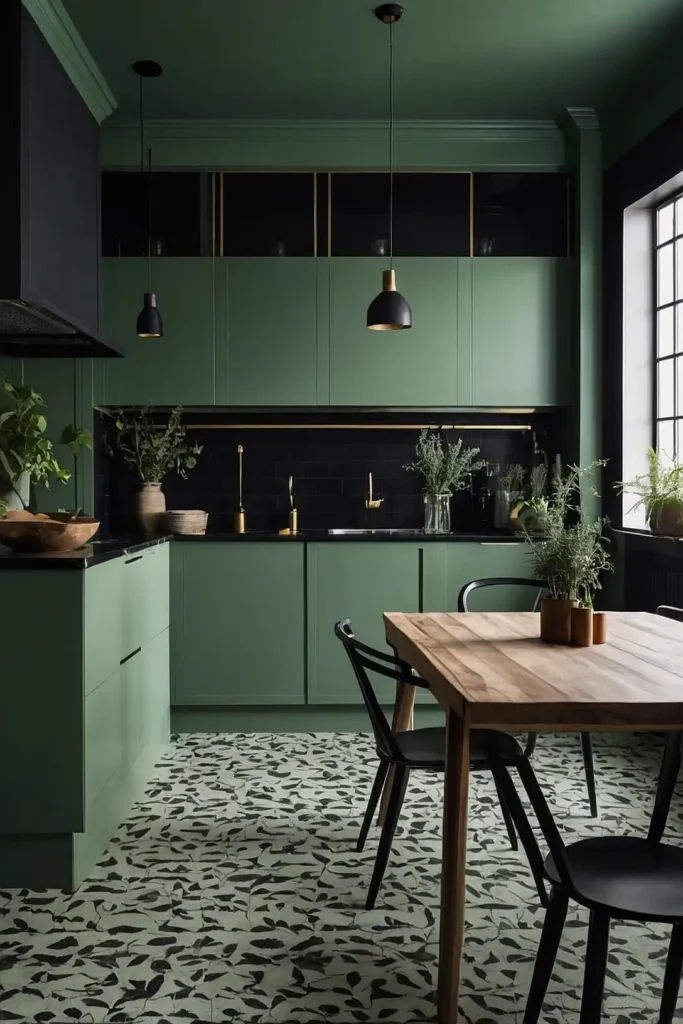
Pair sage green with matte black accents for contemporary contrast that adds definition and architectural interest.
The stark juxtaposition creates a modern edge within the soft green palette.
Add black through window frames, lighting fixtures, or appliances.
The defined black elements create graphic punctuation that prevents the sage from feeling too soft or traditional.
This high-contrast approach works particularly well in modern and industrial-inspired kitchens.
21: Sage Green Cabinet Interiors

Paint the inside of glass-front cabinets sage green while keeping exteriors neutral for a surprising color moment that’s revealed selectively.
This unexpected interior color showcases displayed items. The contained color creates depth and interest without overwhelming the space.
White dishware pops dramatically against the colored backdrop for elegant contrast.
This approach delivers significant design impact with minimal paint required.
22: Vertical Sage Green Paneling
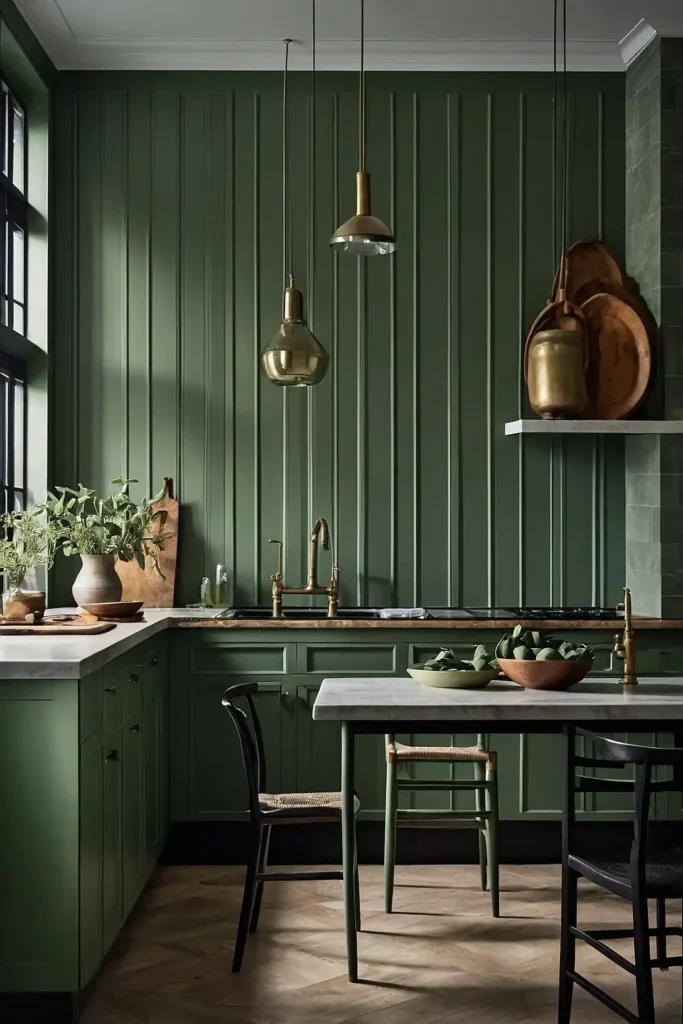
Install vertical tongue-and-groove paneling painted sage green for textural interest with subtle color.
The linear elements add architectural character while the sage creates a soothing backdrop.
Extend the paneling to partial or full height depending on your ceiling configuration.
The vertical lines visually raise the ceiling while adding traditional craftsmanship.
This treatment works beautifully in farmhouse, cottage, or transitional kitchen styles.
23: Sage Green Kitchen Art

Hang artwork featuring sage green tones to introduce the color through easy-to-change decorative elements.
Botanical prints, landscapes, or abstracts with sage notes connect to your color story.
Frame pieces in complementary materials like natural wood or gold. Group multiple pieces for gallery impact or choose one oversized piece as a focal point.
This approach adds personal character while testing your color commitment before larger investments.
24: Sage Green Dish Collection

Display sage green dishware through open shelving or glass cabinets for functional décor that contributes to your color scheme.
Contemporary or vintage pieces equally enhance the palette.
Mix various green tones and finishes from matte to glossy for textural interest. Arrange in visually pleasing stacks or groupings rather than rigid rows.
This practical approach ensures your decorative elements earn their space through daily use.
25: Gradient Cabinet Strategy
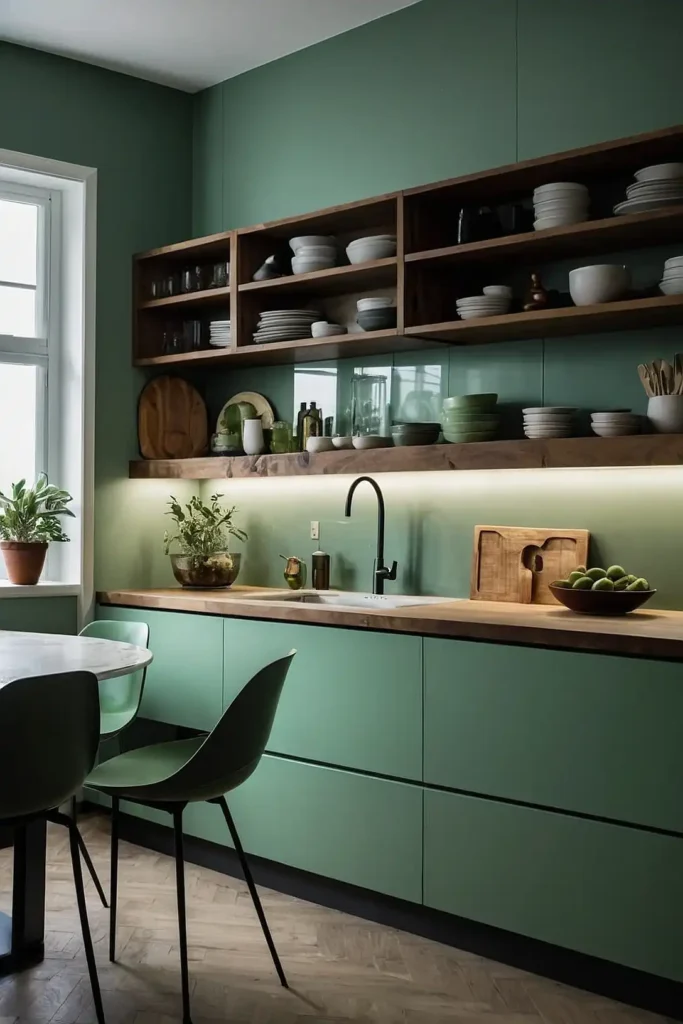
Arrange cabinets in a graduated sage green palette, with deepest tones at the bottom transitioning to lightest shades at the top.
This Ombre effect creates visual interest while maintaining color cohesion.
The graduated approach mimics how light naturally falls in a space. The lightest cabinets at eye level and above keep the space feeling open and bright.
This sophisticated color technique shows thoughtful design intention beyond basic color choice.
26: Sage Green Appliance Garage
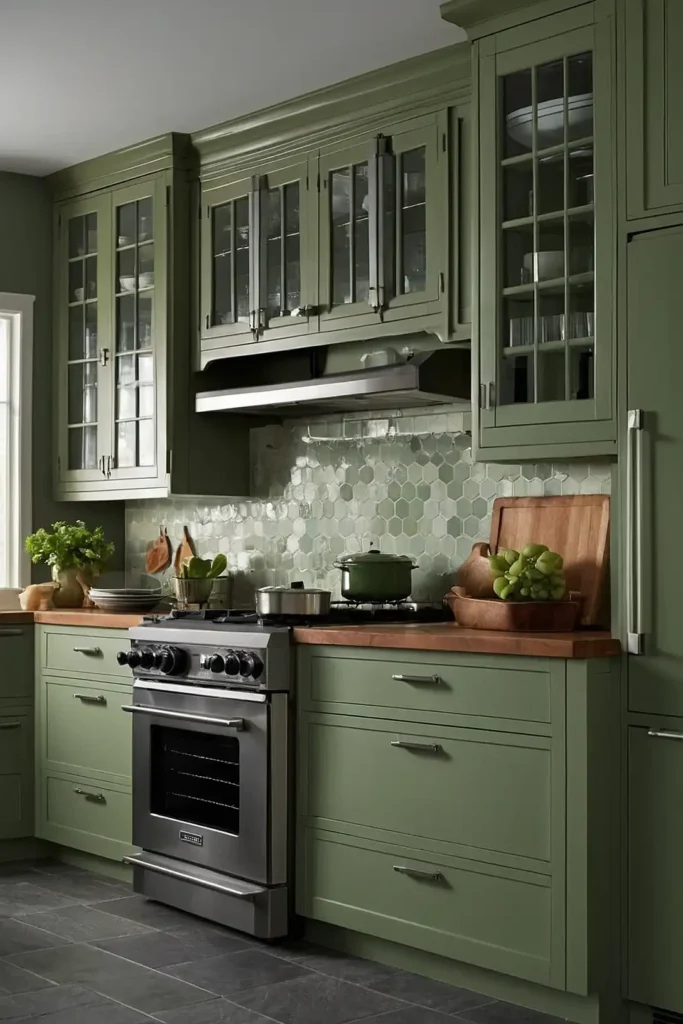
Build a sage green appliance garage or countertop cabinet to hide small appliances while adding architectural color.
This targeted element keeps counters clear while introducing the signature hue.
Design with unique details like curved corners or special hardware. The distinct element functions as a color-forward solution to everyday storage needs.
This practical feature combines form and function in one distinctive kitchen element.
27: Sage Green Breakfast Nook
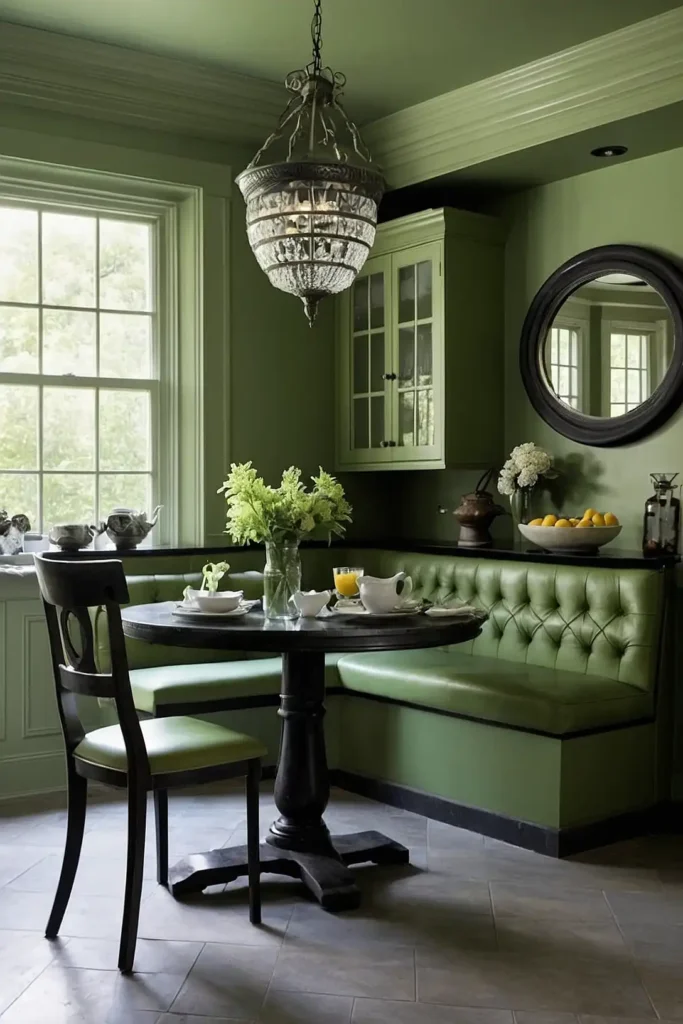
Create a sage green dining nook with banquette seating, cushions, or wall color to define this area within your kitchen.
The color zoning creates a distinct space within the larger room.
Add pillows and seat cushions in complementary tones and patterns. This cozy corner invites lingering conversations beyond meal preparation.
The defined green zone creates visual separation without requiring actual walls or dividers.
Conclusion
Whether you go all-in with sage cabinetry or start small with accessories, this versatile color brings natural tranquility to your kitchen.
Embrace sage green to create a space that feels both on-trend and timelessly connected to nature.





